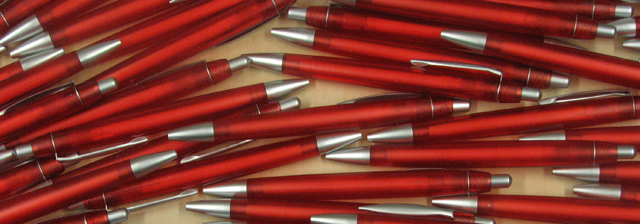
By Abby Egerter
A few weeks ago, I had a conversation with someone who had recently started working as a production editor. I congratulated her on her new in-house position and then paused for a moment before asking what she actually did.
Oh, she said, it’s really just copy editing.
And that, my friends, is one of the reasons I’m not surprised that many people don’t know that “editor” is actually a broad, vague term that covers a wide array of editorial tasks. There are developmental editors, substantive editors, and stylistic editors; there are copy editors, production editors, and proofreaders; there are also content editors and editors-in-chief.
Some editors specialize in only one type of editing; others will gladly handle jobs that range across a spectrum of editing tasks. Still others may not even edit in the usual sense: editors-in-chief are actually managers; content editors (sometimes referred to as senior editors) may be in charging of selecting or writing content rather than revising it. Additionally, an editor who is given one title may actually do a significant amount of work that is best described under another title, as is the case with my aforementioned colleague.
If all this has you scratching your head, take comfort in knowing that your confusion is (unfortunately) quite normal. Allow me to clarify some common editing roles.
Developmental editing involves providing guidance on the structure and content of a book starting from the time the book is conceived, at least until a first draft is complete. Developmental editors, whether in-house or freelance, generally work directly for publishers that want to create non-fiction texts; an individual author is unlikely to hire someone for this type of work.
Substantive editing involves reviewing the overall structure of a text. For works of fiction, the editor makes sure that there are no plot holes, the characters are fully developed, the surprise ending is actually a surprise, etc. An editor who works on non-fiction must, insofar as they can, check that arguments are logically consistent and structured so that the reader can readily follow them, keep historical books and memoirs from jumping back and forth through time like a season of Doctor Who, and so on.
Copy editing is the nuts-and-bolts editing that involves cleaning up grammar and spelling, and ensuring that sentences are well-structured so that the author’s meaning is clear. Additionally, this may involve some fact checking, even if it’s just to verify that the names of real people and places are spelled correctly. Fact checking is always useful for non-fiction, but when fiction involves real people, places, and historical eras, you can still spare your author some embarrassment by pointing out that their 18th-century romantic hero wouldn’t have worn Elizabethan fashions, as the Elizabethan era ended in 1603.
Stylistic editing exists somewhere between substantive editing and copy editing. In this case, the editor helps to maintain the smooth flow of information at the paragraph level by rearranging paragraphs or reorganizing the information within a single paragraph. They will also ensure that transitions between paragraphs are natural, meaning that content moves easily between topics without any sudden, jarring shifts.
Production editing is the final stage of preparation before publication. The editor may have to coordinate the typesetting and design work, check mock-ups for consistent style and correct formatting, verify page counts, and review printer’s proofs before the manuscript goes to print. These are the people who know why all those blank pages mysteriously appear at the end of your book.
There are numerous other tasks that fall under the general term “editing,” but I won’t bore you with all the details. You can learn more by visiting the EAC website.
Suffice it to say that when hiring an editor—or when being hired as an editor—make sure you know what’s expected, regardless of the editorial label attached to the job.
Abby Egerter is the assistant editor of BoldFace and a freelance editor who works on books, theses, and websites in diverse fields of knowledge.

What a useful article, Abby — for editors and authors alike! It is sometimes so tricky to put a name to the type of editing we do. And even then, it can vary from project to project. This article is being saved for future reference.
LikeLike